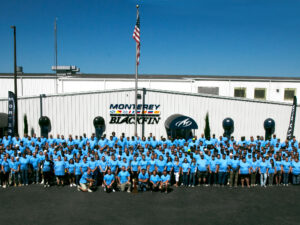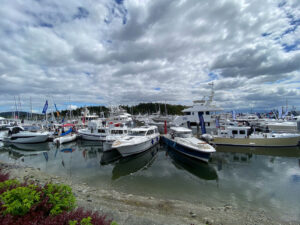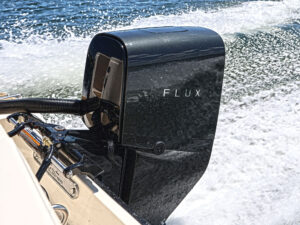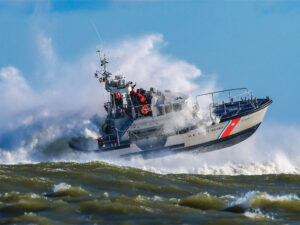Overview
Stingray’s 2021 269DC represents a new tack for the popular boatbuilder. It’s the company’s first crossover fishing boat aimed at the premium boat market—and it’s still comfortably priced, keeping within Stingray’s outstanding reputation for delivering quality and fun in family boats with an eye on value.
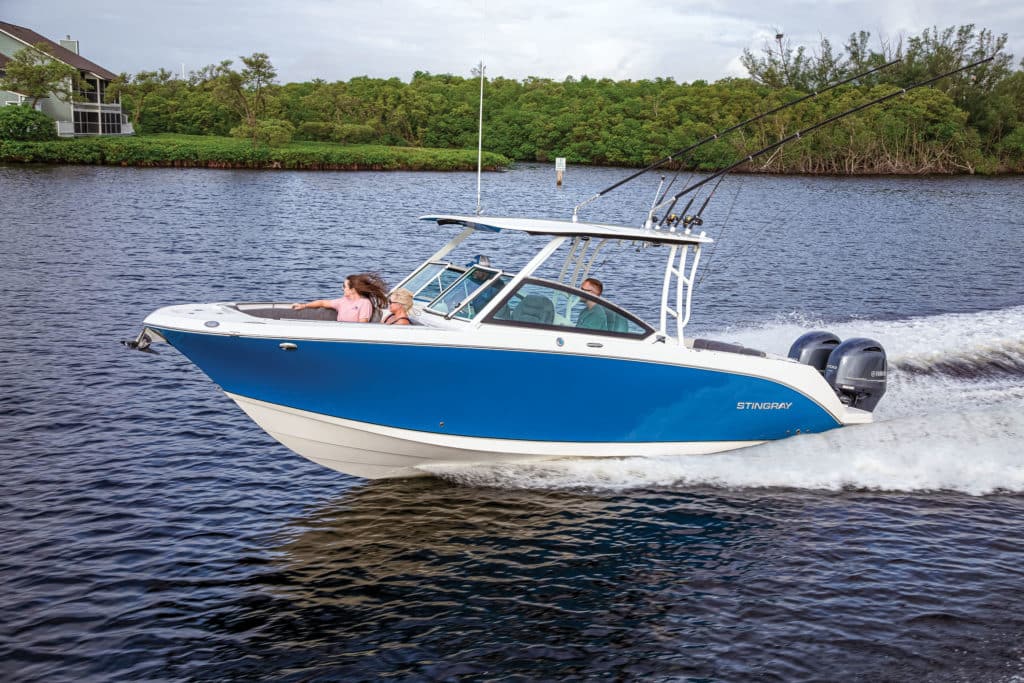
Engines
Twin Yamaha F200 outboard engines powered our test boat. These are inline-4, 2.8 liter, outboards rated to maximum rpm of 6000. With these outboards, our boat planed out in just 3.7 seconds and made an average top speed of 49.9 mph, with several 50-plus mph trials. Power steering, a three-spoke stainless steering wheel, and a heavy-duty stainless hardware package are included. You can equip the 269DC with Optimus joystick steering with autopilot ($16,152), and anglers who venture far offshore for pelagics or bottom fishing should strongly consider it. This joystick autopilot system is among the easiest to learn and most convenient to use.
Interior and Accessories
Its fishy nature is a departure from the sporty bowriders and deck boats, sure, but all the accoutrements of a fun rec boat are aboard the 269DC. The dual-console style, a fast-growing category in coastal boats, is a saltwater-hardened bowrider that gives the comfort of forward seats, posh interior cockpit seating and a walk-through windshield. Dual consoles’ versatility is the primary asset that has driven the category’s growth over the past decade, and we are glad to see Stingray in it.
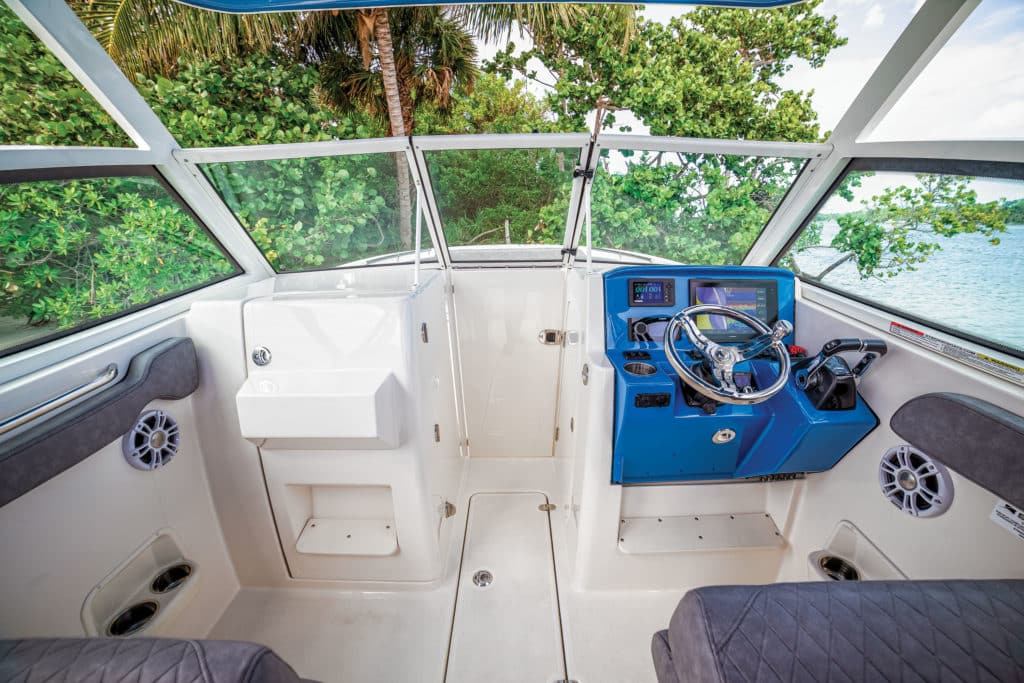
Taking a cue from popular performance boats, the seating throughout is firm, with multidensity foam that ensures comfort in the roughest waters. Durable rot-proof stitching, supple vinyl, and sewn-in accents add to the luxurious look and feel. Vinyl colors are rich, available in shades like charcoal gray and deerskin brown. At the bow, seating is deep and plush. Our 269DC test boat came upholstered in brown, with diamond pleat accents and contrasting black piping. Thick bolsters surround the area, making it comfortable to sit facing any direction while leaning against the deeply padded bolster. Storage under the port and starboard seats keeps the deck organized. The bow seat’s center cushion lifts up to reveal a step to the anchor locker. Beneath it, an insulated cooler drains overboard.
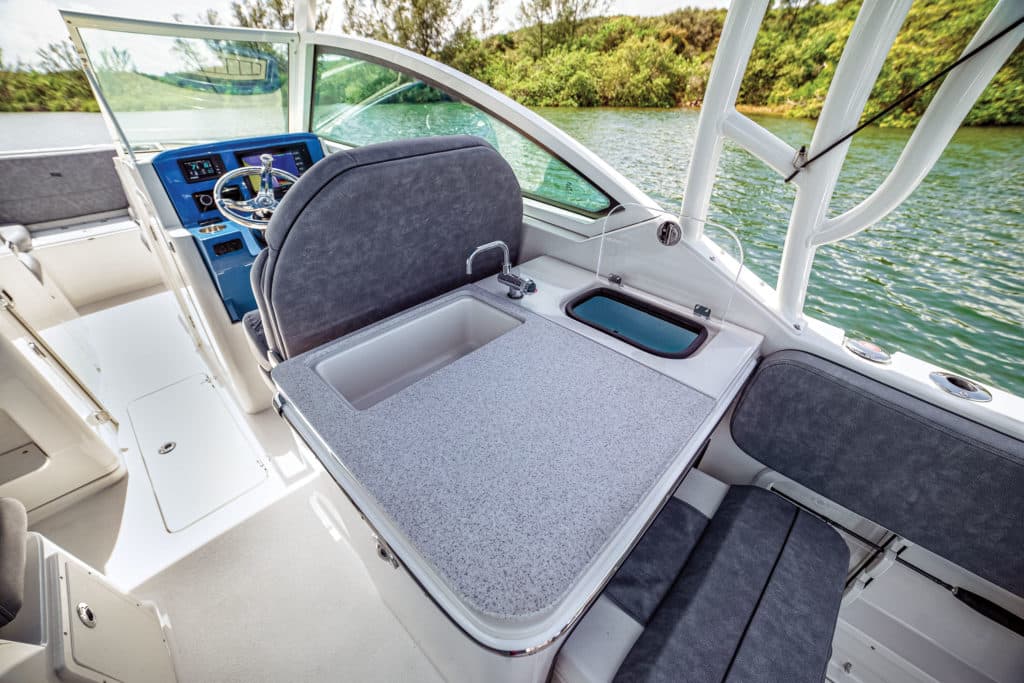
In the cockpit, portside seating is back-to-back, but the cooler module slides open to stretch the lounge aft to the transom to provide comfortable bench seating, with a bolstered coaming serving as a backrest to accommodate big crews in this Yacht Certified vessel.
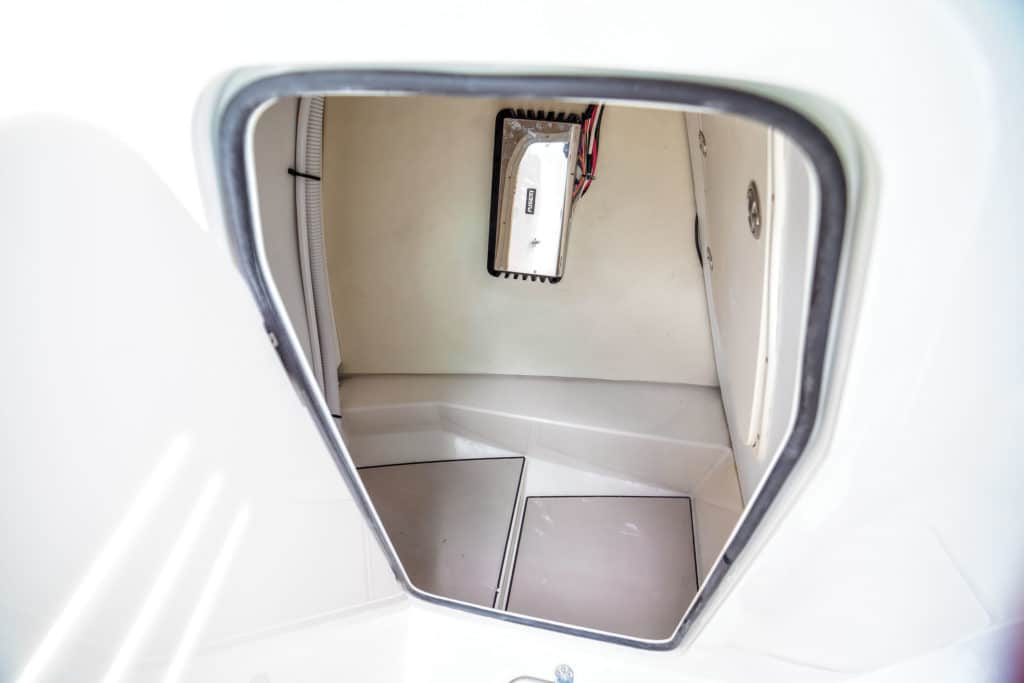
Stingray prioritizes comfort over fishing, as typified by the transom seating, which is fixed in place and does not fold away. Most fishing boatbuilders use foldaway benches in the cockpit, which is often less comfortable but frees up the deck for fish-fighting action. In a further nod to comfort and relaxation, Stingray built an aft-facing couch on the transom, keeping those who choose to remain in the boat comfortable when at anchor while others swim or go beach combing.
In addition to comfort, there is an added bonus to the fixed transom seat: It hinges upward, supported on durable hardware and gas shocks to reveal the plumbing and standard four-bank battery system belowdecks. The work area is spacious and convenient to access, reducing maintenance efforts in long-term ownership.
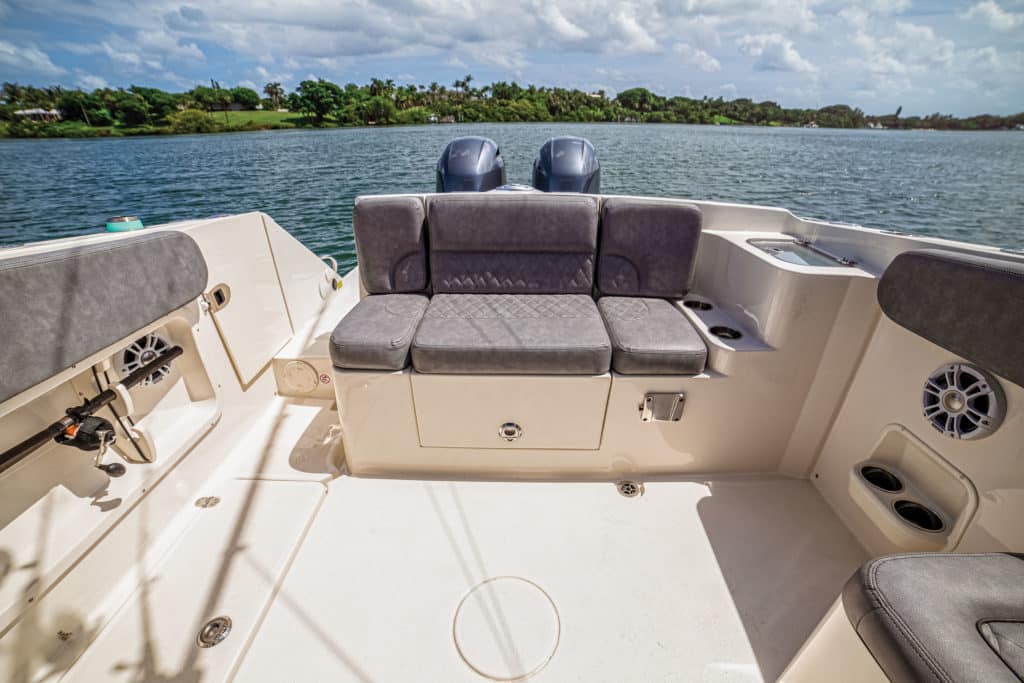
The captain’s chair is extra-wide and comfortably positioned for a clear view forward when in command. On our tester, we had the optional hardtop ($11,768), and the underside was color-matched to the hull sides ($691). There are additional rod holders in the hardtop, and the entire structure is powder-coated for a cool accent in an off-white tone. The convenience package, included as standard, provided many features normally optional on competitors’ boats, such as a Fusion stereo. The most desirable option would be the windlass.
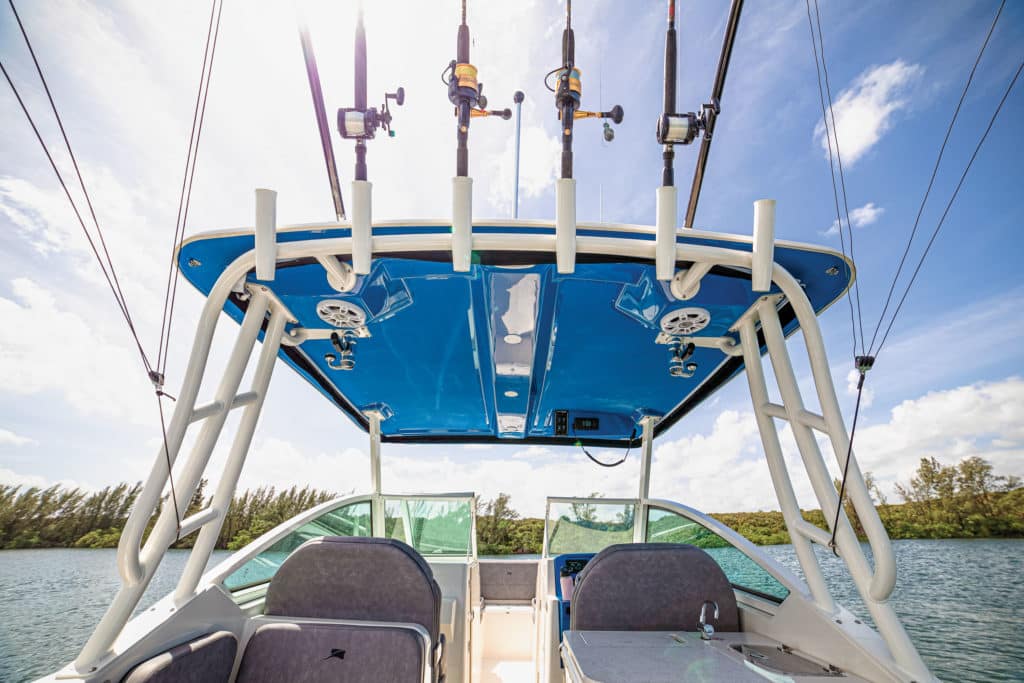
For fishermen, there are a pair of rod holders in the gunwales, a pair of under-gunwale rod holders, and four shotgun rod holders in the transom. Also, in the transom is a handy 25-gallon baitwell. Tackle storage below the cockpit seats keeps gear handy.
The 269DC is certainly a departure in hull style for Stingray, but it keeps the boatbuilder squarely in the middle of its lane in providing quality boating fun for adventurous families.
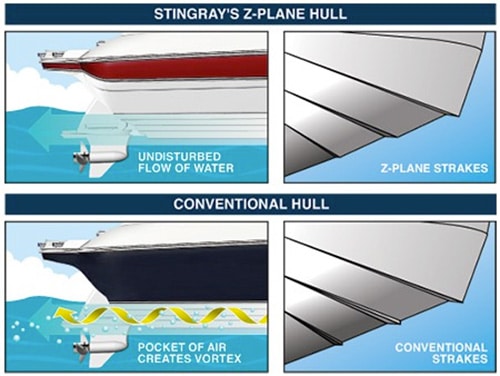
Construction and Design
Stingray built the 269DC on its proven Z-Plane hull. The design features a hull bottom with three planing surfaces., of varying deadrise: steepest along the keel, less shallow mid-body and flattest near the chines. A sharp stem cleaves wakes and transitions to a 21-degree deadrise at the transom.
How We Tested
- Engines: Twin 200 hp Yamaha F200s
- Drive/Props: Outboard/Reliance 14 1/4″ x 18″ 3-blade stainless steel
- Gear Ratio: 1.86:1 Fuel Load: 70 gal. Crew Weight: 550 lb.
High Points
- Fusion audio system rocks the boat, and can be controlled via the head unit or multifunction display.
- Convenience package is standard and offers important features, like an audio system.
Low Points
- Fixed transom lounge encroaches on fishing space, but is more comfortable than folding seats while offering easy access to the bilge, batteries and pumps.
Toughest Competitor
Sailfish offers a 276DC of comparable size ($194,426 with twin 200 hp Yamahas and hardtop), but takes a hardcore angler’s approach to its design. Foldaway seating opens the transom, and a 22-degree deadrise at the transom is better suited to heavy seas but more tender at rest when the crew is moving about the boat.
Pricing and Specs
| Price: | $147,456 (base with twin Yamaha F200 outboards) |
|---|---|
| LOA: | 27′11″ |
| Beam: | 8′6″ |
| Draft (max): | 1′6″ |
| Displacement: | 6,400 lb. |
| Transom Deadrise: | 21 degrees |
| Bridge Clearance: | 8′9″ |
| Seat/Weight Capacity: | Yacht Certified |
| Fuel Capacity: | 135 gal. |
| Max Horsepower: | 400 |
| Available Power: | Yamaha, Mercury and Suzuki outboards |
Speed, Efficiency, Operation
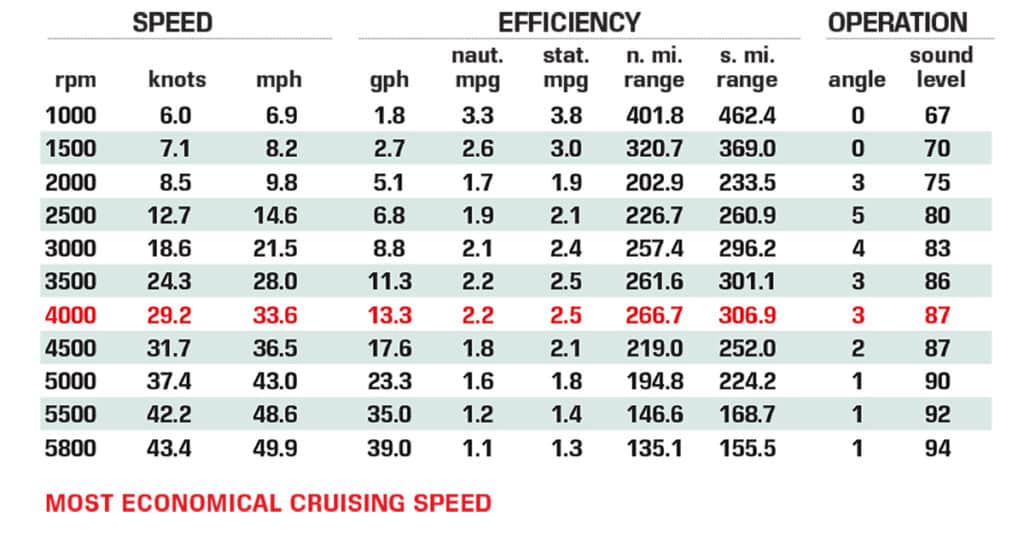
Stingray Boats – Hartsville, South Carolina; 843-383-4507; stingrayboats.com

